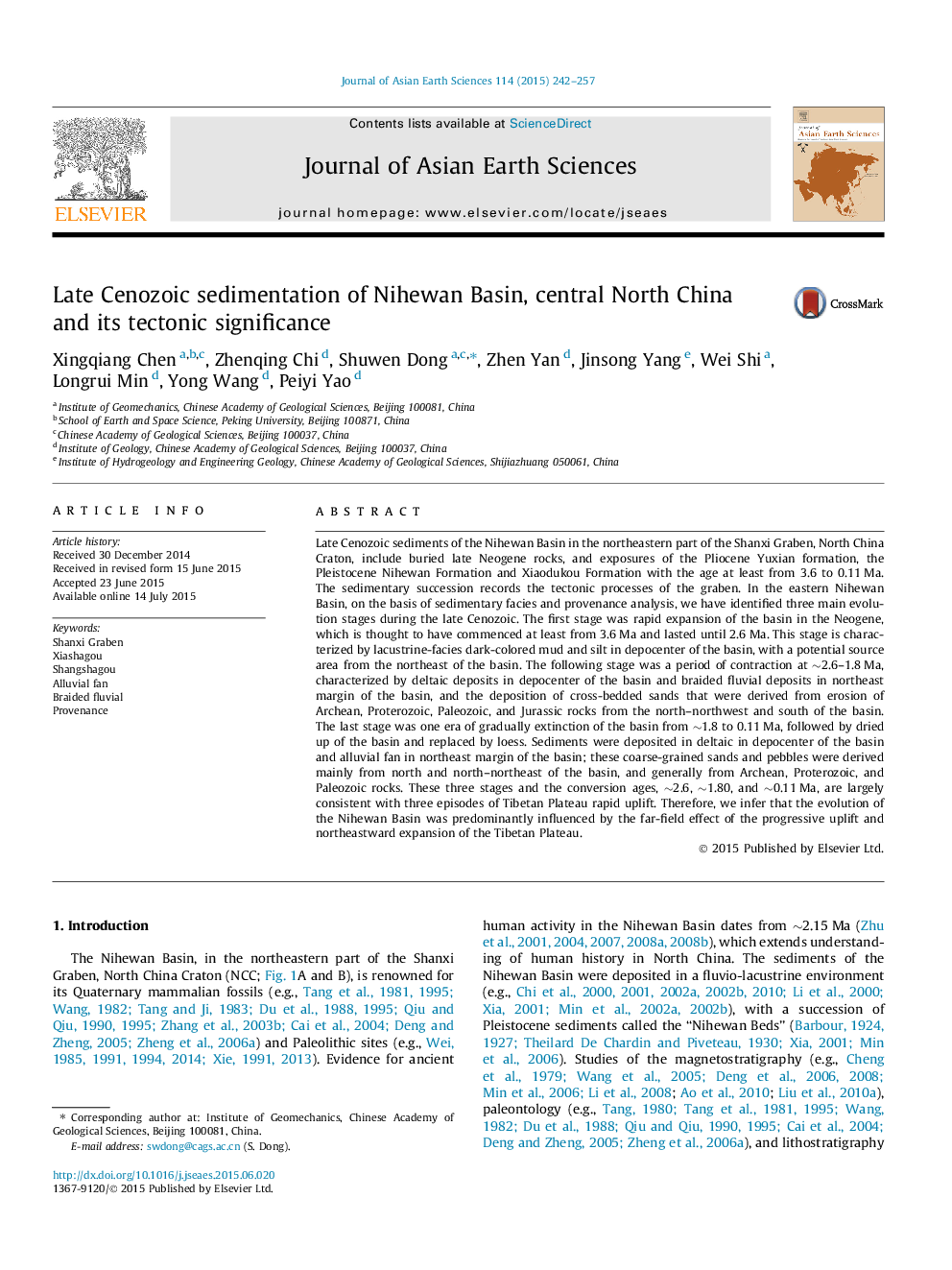| کد مقاله | کد نشریه | سال انتشار | مقاله انگلیسی | نسخه تمام متن |
|---|---|---|---|---|
| 4730128 | 1356737 | 2015 | 16 صفحه PDF | دانلود رایگان |
• This work proposes a three-stage evolution of Nihewan Basin in late Cenozoic.
• The first stage is a rapid expansion of the basin from 3.6 to 2.6 Ma.
• It then underwent contraction (∼2.6–1.8 Ma) and extinction (∼1.8–0.11 Ma) stages.
• The basin formation and inversion are connected with growth of the Tibetan Plateau.
Late Cenozoic sediments of the Nihewan Basin in the northeastern part of the Shanxi Graben, North China Craton, include buried late Neogene rocks, and exposures of the Pliocene Yuxian formation, the Pleistocene Nihewan Formation and Xiaodukou Formation with the age at least from 3.6 to 0.11 Ma. The sedimentary succession records the tectonic processes of the graben. In the eastern Nihewan Basin, on the basis of sedimentary facies and provenance analysis, we have identified three main evolution stages during the late Cenozoic. The first stage was rapid expansion of the basin in the Neogene, which is thought to have commenced at least from 3.6 Ma and lasted until 2.6 Ma. This stage is characterized by lacustrine-facies dark-colored mud and silt in depocenter of the basin, with a potential source area from the northeast of the basin. The following stage was a period of contraction at ∼2.6–1.8 Ma, characterized by deltaic deposits in depocenter of the basin and braided fluvial deposits in northeast margin of the basin, and the deposition of cross-bedded sands that were derived from erosion of Archean, Proterozoic, Paleozoic, and Jurassic rocks from the north–northwest and south of the basin. The last stage was one era of gradually extinction of the basin from ∼1.8 to 0.11 Ma, followed by dried up of the basin and replaced by loess. Sediments were deposited in deltaic in depocenter of the basin and alluvial fan in northeast margin of the basin; these coarse-grained sands and pebbles were derived mainly from north and north–northeast of the basin, and generally from Archean, Proterozoic, and Paleozoic rocks. These three stages and the conversion ages, ∼2.6, ∼1.80, and ∼0.11 Ma, are largely consistent with three episodes of Tibetan Plateau rapid uplift. Therefore, we infer that the evolution of the Nihewan Basin was predominantly influenced by the far-field effect of the progressive uplift and northeastward expansion of the Tibetan Plateau.
This figure shows us the three-stage evolution of the Nihewan Basin. The first stage was rapid expansion of the basin during 3.6–2.6 Ma. The following stage was a contraction period of the basin between ∼2.6 and 1.8 Ma. The last stage was the gradually extinction era, from ∼1.8 to 0.11 Ma. Its driving origination was probably associated with the northeastward expansion of the Tibetan Plateau.Figure optionsDownload as PowerPoint slide
Journal: Journal of Asian Earth Sciences - Volume 114, Part 1, 15 December 2015, Pages 242–257
